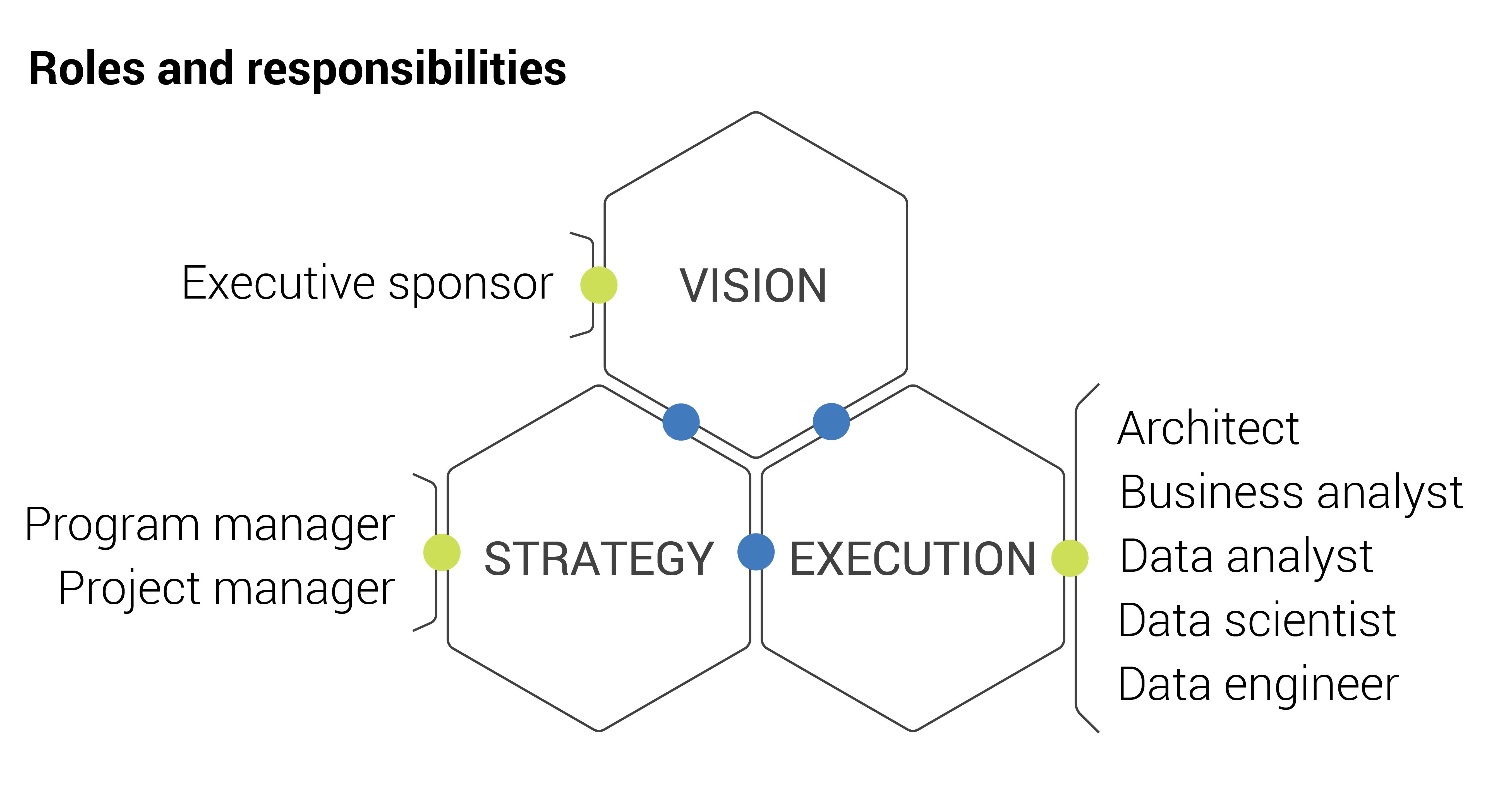
Data analytics journey: identifying the key roles for a successful project
The data an organization uses and owns is one of its most crucial resources. An organization that gets better at harnessing its data will see transformation in its people, processes and overall business results. As the organization becomes more sophisticated in understanding and using its data, it will need to fill new roles from inside and outside the organization.
In the first article in this series, we looked at a data analytics maturity model and the four phases all organizations will go through in their analytics journey. This article focuses on the different roles and responsibilities an organization will have to fill as it becomes better at understanding and using its data. Depending on where an organization sits on the data maturity model, one person may fulfill more than one of the roles listed below. As an organization moves up in the maturity model, more and more of these roles will be added, either internally or with outside support from contractors or consultants.

Role identification
Each organization will likely have an imbalance among the vision, strategy and execution roles. An organization may have a visionary leader with a specific plan for growth, but lack the talent to clearly understand the data or define a strategy. Another organization may have enterprising data engineers and scientists who have interesting ideas about how to manage data, but the organization lacks leaders who can lay out a vision to take advantage of that data. In addition, not every organization has filled each of the roles listed below. As organizations grow and get more complex, however, each of these roles will be necessary for the organization to use its data successfully.
Executive sponsor
Any data project is directly related to specific organization strategic goals: growth, efficiency or something else. The executive sponsor could be a combination of senior-level people, including the chief executive officer, the chief financial officer and the chief information officer. The technical resources necessary to fulfill the goal will vary depending on what the goal is; the sponsors likely will not have the background understanding of what the technical resources are necessary to fulfill the goal.
Program manager
A successful strategic plan needs an evangelist, which is one of the primary roles of the program manager. The program manager has an organizational vision into what is necessary to meet the goals set by the sponsor. They will determine what resources are necessary to carry out the goals. At a high level, the program manager will understand what types of data the organization has – and what data it needs – related to key areas such as sales, finance and operations.
Project manager
The project manager bridges the gap between strategy and execution, ensuring the right resources are in place or added to ensure the project is completed within deadline and budget.
Data architect
Like a building architect who understands different structural techniques, the data architect understands different data platforms – both the ones the organization currently uses and other platforms in the marketplace – and how these platforms can work together to help support the organization’s data maturity journey. The architect will make recommendations along the lines of, “Our enterprise resource planning (ERP) platform is going to migrate to the cloud in six months; so we should wait to do X, until we get to that migration point.” The architect will be aware of how to time data management changes and not rush migrations to new technologies and platforms.
Business analyst
The business analysts will have a clear idea of both the goals laid out by the sponsors and the organization’s core business processes. They will identify if the right data exists and if it is in the best condition to support the organizational goals. They will work closely with both the architect and the data engineers, analysts and scientists, balancing “nice to have” ideas with “must have” ideas. The business analyst will create a backlog of items for the rest of the development team to accomplish.
Data engineer
The data engineer is core to moving data efficiently, accurately and with minimal interruptions. They understand how to best implement various data platforms and technologies and are well versed in data modeling techniques to support a given business use case.
Data analyst
The data analyst is a data storyteller. They will dig through existing data and create visualizations that will help inform the managers, architect and sponsor.
Data scientist
The data scientist identifies the right models or builds new models to drive insights previously undiscovered in existing datasets. Data scientists use a structured process that involves the application of machine learning and artificial intelligence to answer business questions.
Moving toward enterprise-wide success
Most organizations work in silos – finance, HR, operations, marketing and so on – each with their own unique data needs and systems. A data project may develop in one silo – for example, finance – and all of the roles identified above will do their part to make the project successful. The key for an organization as it moves along the data maturity model is to be able to translate success with these specialized skills in one part of the organization to an enterprise-wide level.
One person might fulfill one or more of the roles described above in a part-time way until the organization’s data analytics maturity reaches a state that demands full-time coverage. No one individual is going to contain all these skills at a high level. In early phases, it will be necessary to supplement existing teams with outside resources to accelerate maturity.



